Koi Carp: The Fish that Conquered the Waterfall
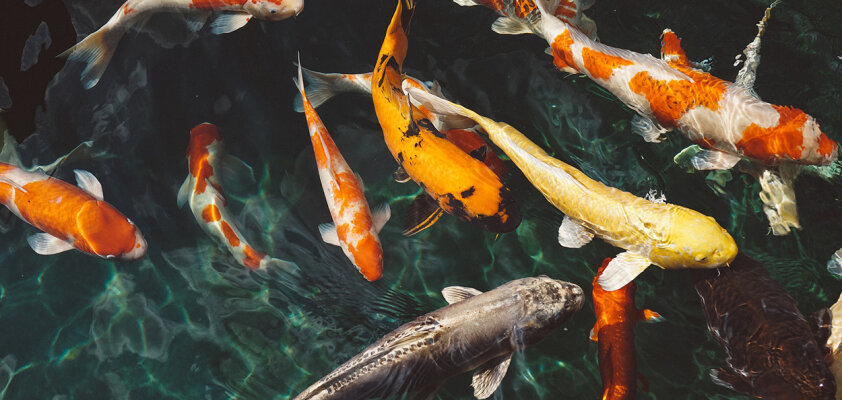
Colorful, unique, and inseparable from any Japanese pond: That is the Koi, the National Fish of Japan. Once a discovery by rice farmers from western Japan, these carp are now found worldwide in lakes, garden ponds, and rivers. However, their shimmering colors are not the only reason why the whole world is enchanted by these fish.
What do koi carp cost?
Koi simply means “carp” in Japanese, and the fish as we know them are called Nishikigoi – “Brocaded Carp” – in Japan. The name refers to how valuable a Koi can be: The most expensive carp in the world was sold for 1.5 million euros, but on average, a fish from a normal breeding costs 5000 euros. Who would spend so much money on a Koi carp?
The “Koi enthusiasts” are called Koi Kichi, those who care for and watch the animals grow in their garden pond. Not only are their beautiful, colorful scale patterns and human-friendly nature worth their price, but Koi can also live as long as a human: 70 - 80 years, with some specimens reportedly reaching over 200 years old. So, deciding to adopt a Koi might be a decision for life. On average, with good care, the life expectancy of the carp is 20 - 35 years.
The breeding process is complex and competitive: Today, out of the original 6000, there are only 200 breeders left in Ojiya, most of which are family businesses. With about 200 parent fish, Oyagoi, thousands of small carp fry hatch every year – but only a few of them are chosen to become part of the school. The breeding continues with these handpicked Koi.
From the palace to the pond
It all began in Niigata Prefecture, on the west coast of the main island Honshu in Japan. Around 1500, the first carp arrived there from China. However, it was only about 200 years ago that the first colorful fish were placed in the excavated rice fields of the city of Ojiya due to their beauty. Originally intended for consumption, the Koi now adorned the monochromatic landscape – as every winter, the city is covered in meters of snow, turning it white.
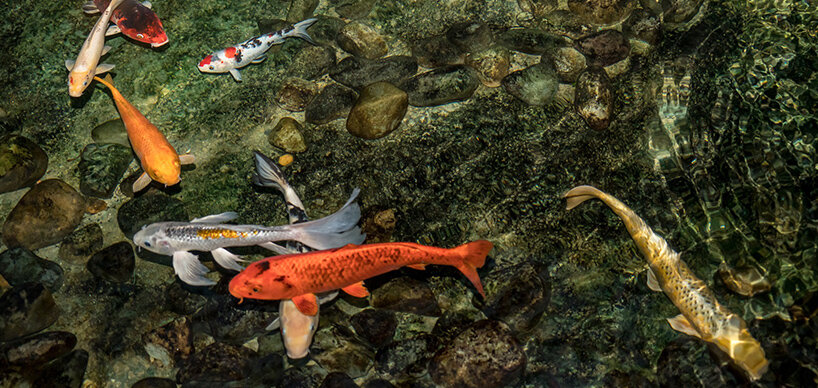
Over time, through selective breeding, the natural and unique patterns of the fish became more prominent: white, black, orange, and even yellow and metallic. This new breeding became known around the time when the then Crown Prince Hirohito, in 1914, released seven Koi into the moat around his palace, which he had received as a gift. 27 carp from Niigata took second place at the Taisho Exhibition in Tokyo. This exhibition was organized, among other reasons, to showcase the technical and cultural progress in Japan.
Thus, the carp were officially recognized as a cultural asset of Japan and attracted international attention. Ten years later, a Koi from Japan was exported for the first time.
What types of koi are there?
There are over 100 different types of Koi carp, distinguished by their color. Breeders continuously create new varieties and subspecies, including:
- Kohaku is the oldest and most well-known type of Koi, white with red spots
- Sanke adds smaller black patterns
- The body of Showa is glossy black with white and red spots
- The Bekko variety is purely black and white
- Ogon is a metallic silver over gold-yellow to orange Koi
- Beautiful black to light blue patterns can be found on the back of Asagi
- Kinginrin Koi is characterized by its golden or silver shiny scales
- Reminiscent of a dragon, the Butterfly Koi has large, fringed fins
Aside from the patterns, breeders also pay attention to the body of the fish. It should be neither too thin nor too thick, well-proportioned, and torpedo-shaped. Size also plays a role: Some Koi can grow over a meter long, with females growing faster due to their more aggressive feeding behavior than males. On average, they measure 55-66 cm, with larger varieties reaching up to 90 cm.
Since 1904, German carp have also been swimming in Japan's ponds. These species are called Doitsugoi, which have mixed with Japanese fish and led to new breeds. These include scaleless fish or variants with individual rows of scales in the different colors typical of Koi.
Koi husbandry: Eat and be eaten
Bringing a Koi home not only brings a piece of Japan but also, contrary to what one might expect from a fish, a friendly companion. Watching them grow is a rewarding activity: Only with age does the personality and pattern of a Koi truly come to life.
The carps are demanding in their care, which, for their fans, adds to their charm. These sociable Kois feel comfortable in ponds, lakes, and calm rivers, as long as the water quality is right. Ideally, the waters should be 15-20 degrees warm, rich in minerals, and kept as clean as possible. The carps also need a lot of space: For example, a pond with an area of 15 square meters, at least 90 cm deep, is sufficient for five Kois. The design elements of the pond, such as bridges and stone decorations, serve as hiding places and sun protection for the fish.
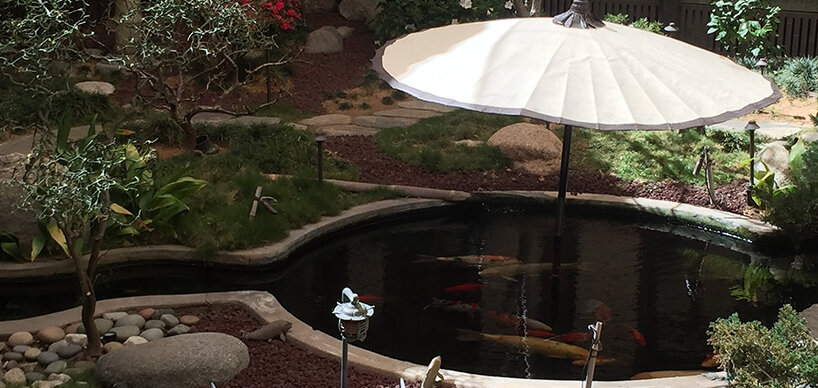
In order to ensure a long and healthy life for the Koi, the first thing that needs to be considered is, of course, the food. Kois have an anatomical peculiarity: They do not have a stomach. Therefore, they should be given easily digestible food. With their straight intestines, they can digest food in about 4 hours, so they should be fed within this interval. Special mixtures for the fish can be found in specialty stores. In summer, Koi food ideally contains a lot of proteins, while in spring and autumn, it is based on germs.
Koi in hibernation
In general, Kois are omnivores and in the wild, they feed on algae, plants, snails, crayfish, and insects. Even smaller fish are on their menu. Therefore, caution should be exercised with other fish species in the pond: While they can easily coexist with other types such as goldfish, these carp will eat just about anything that fits into their mouths. Like humans, they also need a balanced diet and can even be given fruits and vegetables as a source of carbohydrates. Feed with additional carotene promotes the development of the red coloration of their bodies.
During the winter, the fish are fed very little to none. They spend the cold months sleeping on the pond bottom, with their metabolism and growth reduced. The adaptable fish can survive in water as cold as three degrees. However, small Kois (up to 10 cm) should preferably overwinter in heated tanks to continue growing.
In Japan, the fish living outdoors are transported to warmer tanks during the winter because the former rice fields where they live do not provide sufficient heat exchange for the carp, as they are not usually deep enough. However, each pond is different and should be treated accordingly. Freezing, which can affect the oxygen balance, can be avoided by covering the pond. Otherwise, the gas exchange and cleanliness in the pond, which are crucial for water quality and the well-being of Koi carp, can be regulated with special pumps and filters.
Koi: The most important fish in Japan
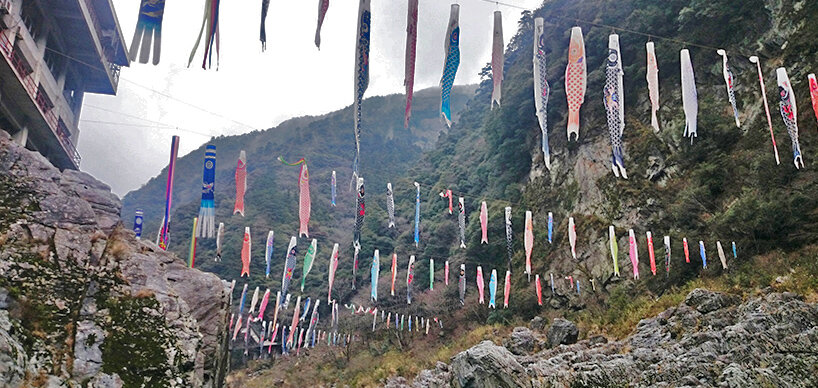
What do the carp have to do with it? They symbolize endurance, strength, and success, as well as wisdom, loyalty, and longevity. A Koi swims upstream against the current and does not give up when encountering obstacles. These qualities are also believed to be possessed by children. Each family can hang their own Koi Nobori: the large black carp represents the father, the red Koi represents the mother, and the smaller blue fish represent the children. The brightly scaled flags represent the flow of life in which the carp – or family members – move tirelessly.
According to a Chinese legend, a Koi even climbed a waterfall and flew into the sky as a dragon. It's no wonder that the colorful carp in Japan is both aesthetically and symbolically captivating.

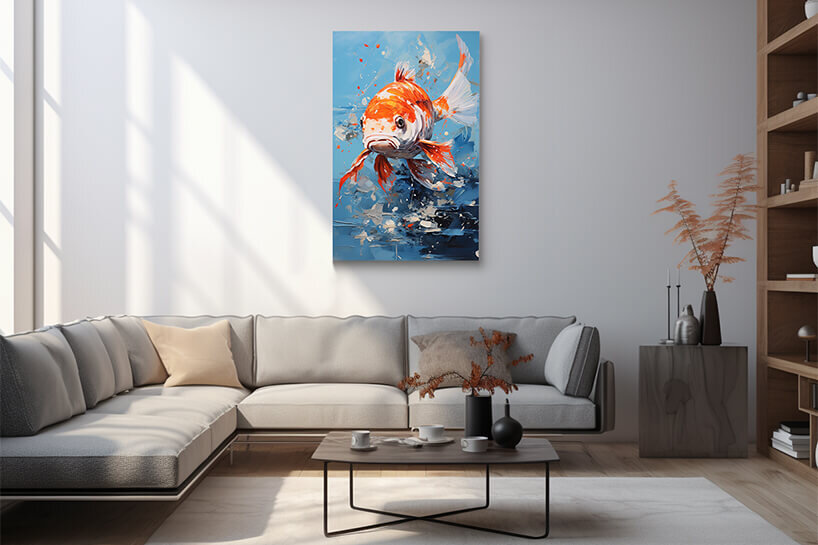
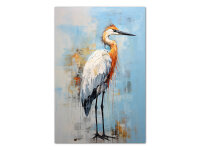

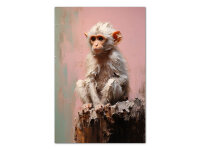
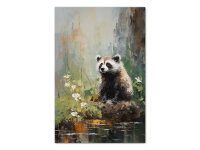










-from-the-yakiyaki-grill-pan.jpg)




